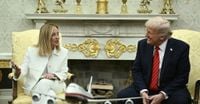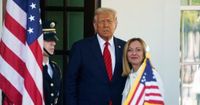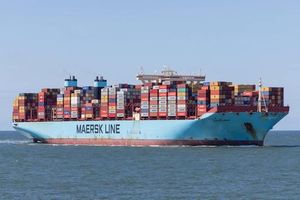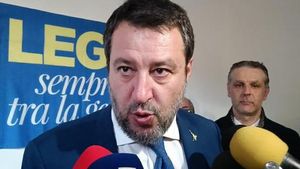During a meeting on Thursday, April 17, 2025, with President Trump in Washington, Italian Prime Minister Giorgia Meloni apparently failed to achieve any progress regarding American tariffs on the European Union. Meloni emphasized that Italy plans to buy more American gas, invite American companies to cooperate in building a nuclear power plant, invest 10 billion euros in the USA in the coming years, and fulfill its NATO commitment to spend 2% of GDP on defense.
As of March 12, 2025, 25% American tariffs are in effect on European steel and aluminum, and since April 5, 2025, 10% tariffs are in effect on all European exports to the USA and 25% tariffs on European cars. The entry into force of even higher tariffs, 20% on all European exports to the USA, and the first round of European retaliatory tariffs have been suspended for 90 days.
A meeting between EU Trade Commissioner Maroš Šefčovič and US Secretary of Commerce Howard Lutnick, as well as the meeting between Trump and Meloni on Thursday, April 17, 2025, did not bring clarity on the issue of tariffs. Bloomberg Economics calculated that trade with the USA accounts for 3% of Italy's GDP.
On April 17, 2025, former Italian Prime Minister Matteo Renzi spoke on Bloomberg TV about the importance of globalization for Italy's export-based economy. Meloni invited Trump to Rome to discuss the war between USA and Europe and the summit USA–EU.
The Tax Cuts and Jobs Act of 2017 will cost the American budget an estimated loss of $4.5 trillion over the next 10 years. Economists estimate that the introduction of 20% tariffs on all EU exports to the USA would significantly increase the effective tariff rate. Goldman Sachs informed its clients that the effective tariff rate would increase from 2.5% in 2024 by about 16 percentage points if the tariffs already introduced by Trump are maintained, and then further sector-specific tariffs come into effect.
Trump expressed optimism following his meeting with Meloni, stating, "There will be a trade agreement [with the EU], 100 percent." This marked a notable shift in his previously critical stance toward the EU, where he has accused European nations of exploiting the USA.
Meloni's visit to Washington had a distinct character compared to Trump's meetings with French President Emmanuel Macron or British Prime Minister Keir Starmer. As a leader with ties to the far-right, Meloni is one of the few EU leaders on good terms with the Trump administration, which Trump himself has acknowledged.
In a friendly atmosphere, Meloni discussed migration and diversity, equality, and inclusion (DEI) policies with Trump, both of whom share similar views on these issues. The Italian-American talks also covered NATO, the war in Ukraine, and tariffs, though neither leader declared that significant progress had been made.
Meloni positioned herself as a potential bridge between Washington and Brussels, coordinating her remarks with European Commission President Ursula von der Leyen prior to her meeting with Trump. However, Meloni made it clear that she could not speak on behalf of the entire EU, emphasizing the need for open and honest discussions.
Despite her efforts, Meloni did not secure any concrete commitments from Trump regarding tariffs, which pose a significant threat to the Italian economy, primarily driven by exports. The current tariffs could severely impact Italy's trade relations with the USA, a situation that has drawn criticism from various quarters, including Renzi, who argued for the necessity of globalization over protectionism.
The Italian economy relies heavily on exports, and as Renzi pointed out, Italy is known for its fashion, food, and manufacturing. The need for globalization is paramount, and Meloni's ideological alignment with Trump may not be sufficient to mitigate the economic risks posed by his administration's trade policies.
As the meeting concluded, Trump complimented Meloni as a "fantastic leader" and expressed hope that Italy could become "the most important European ally of the USA." However, the lack of tangible outcomes from their discussions raised concerns about the future of transatlantic trade relations.
Meloni's visit to Washington was initially seen as an opportunity to advance negotiations on tariffs, especially given her position as a leader of the European Conservatives and Reformists group in the European Parliament. Yet, the meeting highlighted the complexities of the current geopolitical landscape, where national interests often clash with collective EU goals.
American commentators noted that Trump's administration views tariffs as a key tool for economic policy, aiming to boost domestic investment and job creation. This approach has raised alarms among European leaders who fear that prolonged tariff disputes could lead to a significant decline in transatlantic trade.
Economists warn that if an agreement is not reached within 90 days, the implementation of higher tariffs would exacerbate the decline in trade between the USA and the EU. The potential rise in effective tariff rates could have dire consequences for the Italian economy, which is already grappling with the challenges of a post-pandemic recovery.
In the wake of the meeting, Meloni's government faces pressure to navigate the delicate balance between maintaining strong relations with the USA while advocating for Italy's economic interests. The outcome of her visit may have lasting implications for Italy's position within the EU and its relationship with the Trump administration.
As Meloni returns to Europe, the question remains whether her efforts will bear fruit in the form of a more favorable trade agreement or if the realities of Trump's protectionist policies will overshadow any potential gains.






